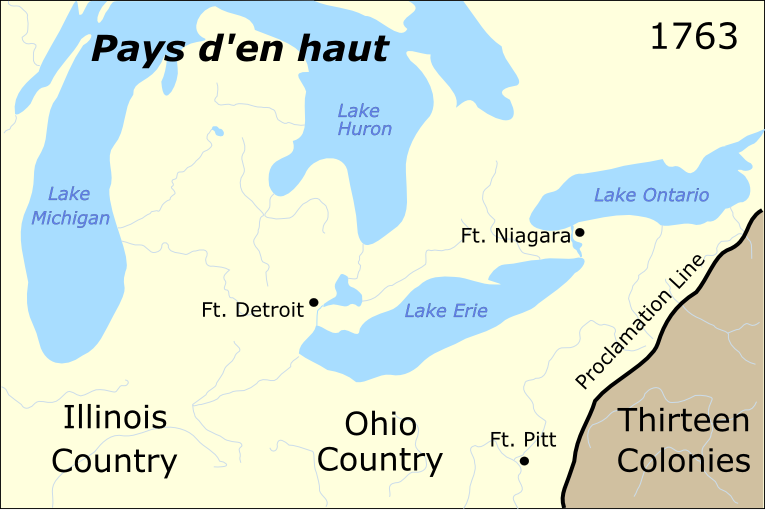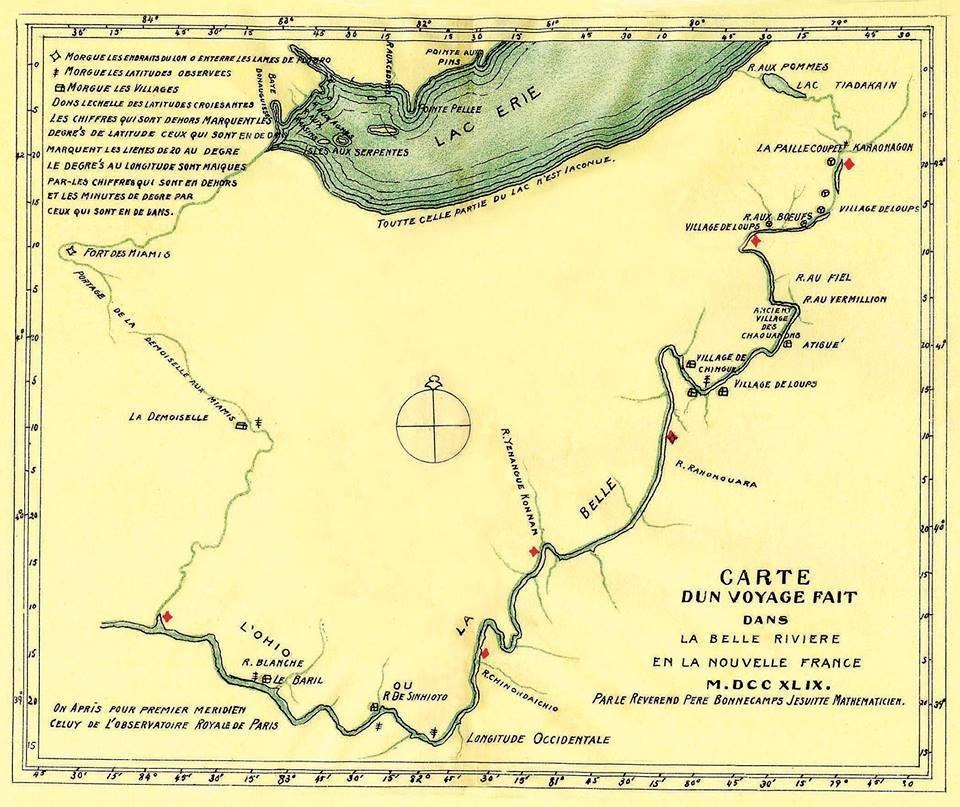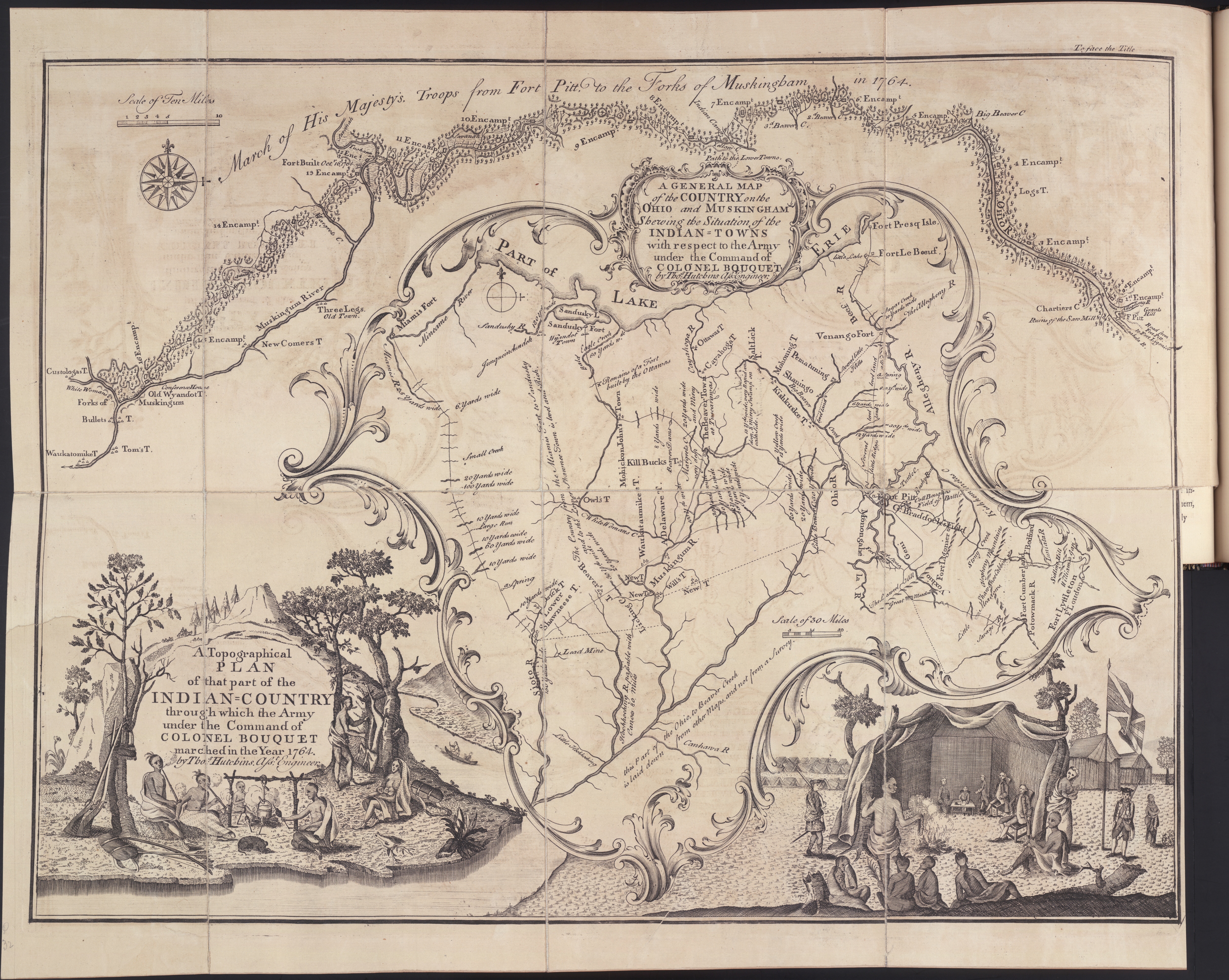|
Guyasuta
Guyasuta (c. 1725–c. 1794; see, Kayahsotaˀ, either "he stands up to the cross" or "he sets up the cross") was an important Native American leader of the Seneca people in the second half of the eighteenth century, playing a central role in the diplomacy and warfare of that era. At young age, he and his family migrated along the Allegheny River and finally settled in Logstown, an Iroquois village in Pennsylvania. The paternal half of his ancestry were decorated warriors. Biography Guyasuta made acquaintance with young George Washington (whom he called "Tall Hunter") in 1753 when he accompanied and guided him through Pennsylvania to the French Fort Le Boeuf, and is referred to as "The Hunter" in Washington's personal journals. Despite the expedition, Guyasuta played a role in defeating the Braddock Expedition in 1755, and allied with the French in the French and Indian War. Guyasuta was a major player in Pontiac's Rebellion—indeed, some historians once referred to ... [...More Info...] [...Related Items...] OR: [Wikipedia] [Google] [Baidu] |
Sharpsburg, Pennsylvania
Sharpsburg is a borough in Allegheny County, Pennsylvania, northeast of downtown Pittsburgh, along the Allegheny River. In 1900, nearly 7,000 people lived here; in 1920, the population peaked at just over 8,900 people. The population was 3,446 at the 2010 census. In the past, it had a rolling mill, foundries, machine shops, and manufacturers of varnish, brick, glass, lumber products, wire, hair, felt, and lubricating oil. In January 1869, the H. J. Heinz Company was founded in Sharpsburg as Heinz Noble & Company to manufacture and sell bricks. Geography Sharpsburg is located at (40.495368, -79.928991). According to the United States Census Bureau, the borough has a total area of , of which is land and , or 26.15%, is water. Surrounding and adjacent neighborhoods Sharpsburg has five land borders, including Etna to the west, Shaler Township to the northwest, two of the five non-contiguous areas of O'Hara Township to the north and southeast, and Aspinwall to the ea ... [...More Info...] [...Related Items...] OR: [Wikipedia] [Google] [Baidu] |
Pontiac's Rebellion
Pontiac's War (also known as Pontiac's Conspiracy or Pontiac's Rebellion) was launched in 1763 by a loose confederation of Native Americans dissatisfied with British rule in the Great Lakes region following the French and Indian War (1754–1763). Warriors from numerous nations joined in an effort to drive British soldiers and settlers out of the region. The war is named after Odawa leader Pontiac, the most prominent of many indigenous leaders in the conflict. The war began in May 1763 when Native Americans, alarmed by policies imposed by British General Jeffrey Amherst, attacked a number of British forts and settlements. Eight forts were destroyed, and hundreds of colonists were killed or captured, with many more fleeing the region. Hostilities came to an end after British Army expeditions in 1764 led to peace negotiations over the next two years. The Natives were unable to drive away the British, but the uprising prompted the British government to modify the policies that ha ... [...More Info...] [...Related Items...] OR: [Wikipedia] [Google] [Baidu] |
Point Of View (West)
''Point of View'' is a 2006 landmark public sculpture in bronze by James A. West; it sits in a parklet named for the work of art, Point of View Park, in Pittsburgh, Pennsylvania. The piece depicts George Washington and the Seneca leader Guyasuta, with their weapons down, in a face-to-face meeting in October 1770, when the two men met while Washington was in the area examining land for future settlement along the Ohio River. The work weighs 750 lbs. and cost $130,000 for materials with charitable donations of land, pedestal and artist time. ''Point of View'' sits on the edge of Mount Washington Mount Washington is the highest peak in the Northeastern United States at and the most topographically prominent mountain east of the Mississippi River. The mountain is notorious for its erratic weather. On the afternoon of April 12, 1934 ... (Grandview Avenue at Sweetbriar Street) on the westernmost end of Grand View Scenic Byway Park and the Grand View Scenic Byway, a de ... [...More Info...] [...Related Items...] OR: [Wikipedia] [Google] [Baidu] |
Logstown
"extensive flats" , settlement_type = Historic Native American village , image_skyline = Image:Logstown1.jpg , imagesize = 220px , image_alt = , image_map1 = Pennsylvania in United States (US48).svg , mapsize1 = , map_alt1 = , map_caption1 = Location of Pennsylvania in the United States , image_caption = The stone marker at or near the former site of Logstown (1725-1758) , nickname = , coordinates = , established_title = Founded , established_date = 1725-1727 , established_title2 = Demolished , established_date2 = June, 1754 , established_title3 = Rebuilt , established_date3 = 1755-58 , population_total = , population_est = 200-500 , pop_est_as_of = 1754 , subdivision_type = State , subdivision_name = Pennsylvania , subdivision_type1 = Present-day Commun ... [...More Info...] [...Related Items...] OR: [Wikipedia] [Google] [Baidu] |
Cornplanter
John Abeel III (born between 1732 and 1746–February 18, 1836), known as Gaiänt'wakê (''Gyantwachia'' – "the planter") or Kaiiontwa'kon (''Kaintwakon'' – "By What One Plants") in the Seneca language and thus generally known as Cornplanter, was a Dutch-Seneca war chief and diplomat of the Wolf clan. As a chief warrior, Cornplanter fought in the French and Indian War and the American Revolutionary War. In both wars, the Seneca and three other Iroquois nations were allied with the British. After the war Cornplanter led negotiations with the United States and was a signatory of the Treaty of Fort Stanwix (1784). He helped gain Iroquois neutrality during the Northwest Indian War. In the postwar years, Cornplanter worked to learn more about European-American ways and invited Quakers to establish schools in Seneca territory. Disillusioned by his people's poor reaction to European-American society, he had the schools closed and followed his half-brother Handsome Lake's movement ... [...More Info...] [...Related Items...] OR: [Wikipedia] [Google] [Baidu] |
Custaloga
Custaloga, also known as Packanke, was a chief of the Delaware (Lenape) tribe in the mid-18th century. He was a member of the Wolf Clan through his mother. Captain Pipe was his nephew and succeeded him as chief. Life Little is known of the early life of Custaloga. He was born as Packanke into the Wolf Clan of his mother. The Delaware had a matrilineal kinship system, in which descent and hereditary leadership were passed through the mother's line. Children were born into the mother's clan and gained their social status there. ''Custaloga,'' as he was documented by Indian agent George Croghan and other British colonists, settled in western Pennsylvania in the mid-18th century and built a sizeable village with his band at the confluence of French Creek and North Deer Creek in Mercer County, Pennsylvania. This town, known as "Custaloga's Town," became his principal seat. He also started another village known as ''Cussewago,'' along French Creek, at the present site of Meadville in ... [...More Info...] [...Related Items...] OR: [Wikipedia] [Google] [Baidu] |
Seneca (tribe)
The Seneca () ( see, Onödowáʼga:, "Great Hill People") are a group of Indigenous Iroquoian-speaking people who historically lived south of Lake Ontario, one of the five Great Lakes in North America. Their nation was the farthest to the west within the Six Nations or Iroquois League (Haudenosaunee) in New York before the American Revolution. In the 21st century, more than 10,000 Seneca live in the United States, which has three federally recognized Seneca tribes. Two of them are centered in New York: the Seneca Nation of Indians, with two reservations in western New York near Buffalo; and the Tonawanda Seneca Nation. The Seneca-Cayuga Nation is in Oklahoma, where their ancestors were relocated from Ohio during the Indian Removal. Approximately 1,000 Seneca live in Canada, near Brantford, Ontario, at the Six Nations of the Grand River First Nation. They are descendants of Seneca who resettled there after the American Revolution, as they had been allies of the British and for ... [...More Info...] [...Related Items...] OR: [Wikipedia] [Google] [Baidu] |
Siege Of Fort Pitt
The siege of Fort Pitt took place during June and July 1763 in what is now the city of Pittsburgh, Pennsylvania, United States. The siege was a part of Pontiac's War, an effort by Native Americans to remove the Anglo-Americans from the Ohio Country and Allegheny Plateau after they refused to honor their promises and treaties to leave voluntarily after the defeat of the French. The Native American efforts of diplomacy, and by siege, to remove the Anglo-Americans from Fort Pitt ultimately failed. This event is best known as an early instance of biological warfare, in which William Trent from an American settler family and Simeon Ecuyer, a Swiss mercenary in British service, gave items from a smallpox infirmary as gifts to Native American emissaries with the hope of spreading the deadly disease to nearby tribes. The effectiveness is unknown, although it is known that the method used is inefficient compared to respiratory transmission and these attempts to spread the disease are ... [...More Info...] [...Related Items...] OR: [Wikipedia] [Google] [Baidu] |
Battle Of Bushy Run
The Battle of Bushy Run was fought on August 5–6, 1763, in western Pennsylvania, between a British column under the command of Colonel Henry Bouquet and a combined force of Delaware, Shawnee, Mingo, and Huron warriors. This action occurred during Pontiac's Rebellion. Though the British suffered serious losses, they routed the tribesmen and successfully relieved the garrison of Fort Pitt. Battle In July 1763, a relief column of 500 British soldiers, including the 42nd Highlanders, 60th Royal Americans, and 77th Highlanders, left Carlisle, Pennsylvania, to relieve Fort Pitt, then under siege. Indian scouts observed Bouquet's force marching west along Forbes Road and reported this to the Indians surrounding Fort Pitt. On August 5, at about 1:00 pm, a part of the force besieging Fort Pitt ambushed the British column one mile east of Bushy Run Station, at Edge Hill. The British managed to hold their ground until after sunset, when the natives withdrew. Bouquet ordered a redou ... [...More Info...] [...Related Items...] OR: [Wikipedia] [Google] [Baidu] |
Custaloga Town Scout Reservation
Custaloga, also known as Packanke, was a chief of the Delaware (Lenape) tribe in the mid-18th century. He was a member of the Wolf Clan through his mother. Captain Pipe was his nephew and succeeded him as chief. Life Little is known of the early life of Custaloga. He was born as Packanke into the Wolf Clan of his mother. The Delaware had a matrilineal kinship system, in which descent and hereditary leadership were passed through the mother's line. Children were born into the mother's clan and gained their social status there. ''Custaloga,'' as he was documented by Indian agent George Croghan and other British colonists, settled in western Pennsylvania in the mid-18th century and built a sizeable village with his band at the confluence of French Creek and North Deer Creek in Mercer County, Pennsylvania. This town, known as "Custaloga's Town," became his principal seat. He also started another village known as ''Cussewago,'' along French Creek, at the present site of Meadville in Cr ... [...More Info...] [...Related Items...] OR: [Wikipedia] [Google] [Baidu] |
French Creek Township, Mercer County, Pennsylvania
French Creek Township is a township in Mercer County, Pennsylvania, United States. The population was 710 at the 2020 census, a decrease from the figure of 771 in 2010. History The Bridge in French Creek Township was listed on the National Register of Historic Places in 1988. Geography According to the United States Census Bureau, the township has a total area of , of which is land and (0.58%) is water. Demographics As of the census of 2000, there were 764 people, 280 households, and 211 families residing in the township. The population density was 36.9 people per square mile (14.2/km2). There were 309 housing units at an average density of 14.9/sq mi (5.8/km2). The racial makeup of the township was 99.48% White, 0.13% Asian, 0.26% Pacific Islander, 0.13% from other races. Hispanic or Latino of any race were 0.79% of the population. There were 280 households, out of which 35.7% had children under the age of 18 living with them, 66.8% were married couples living t ... [...More Info...] [...Related Items...] OR: [Wikipedia] [Google] [Baidu] |
Pittsburgh
Pittsburgh ( ) is a city in the Commonwealth (U.S. state), Commonwealth of Pennsylvania, United States, and the county seat of Allegheny County, Pennsylvania, Allegheny County. It is the most populous city in both Allegheny County and Western Pennsylvania, the List of municipalities in Pennsylvania#Municipalities, second-most populous city in Pennsylvania behind Philadelphia, and the List of United States cities by population, 68th-largest city in the U.S. with a population of 302,971 as of the 2020 United States census, 2020 census. The city anchors the Pittsburgh metropolitan area of Western Pennsylvania; its population of 2.37 million is the largest in both the Ohio Valley and Appalachia, the Pennsylvania metropolitan areas, second-largest in Pennsylvania, and the List of metropolitan statistical areas, 27th-largest in the U.S. It is the principal city of the greater Pittsburgh–New Castle–Weirton combined statistical area that extends into Ohio and West Virginia. Pitts ... [...More Info...] [...Related Items...] OR: [Wikipedia] [Google] [Baidu] |




